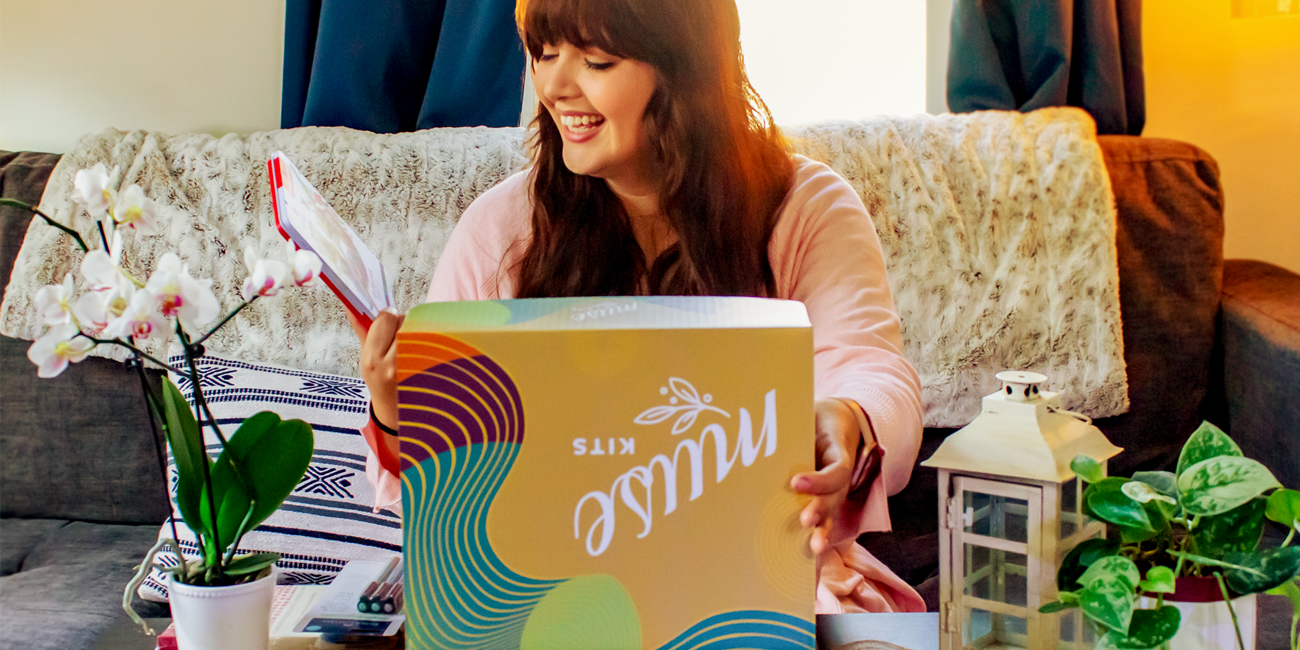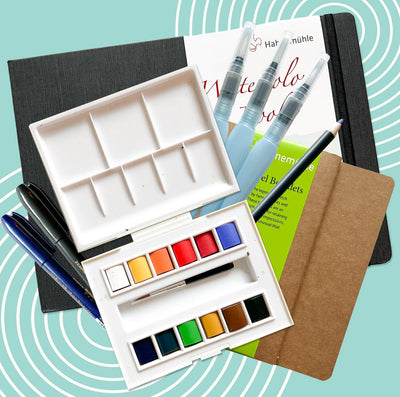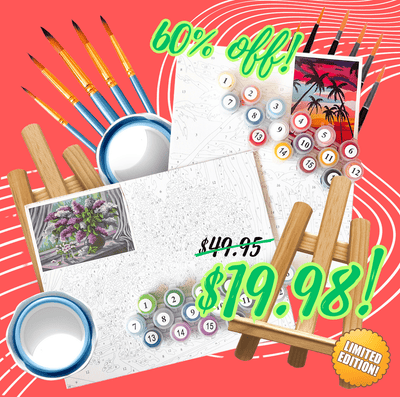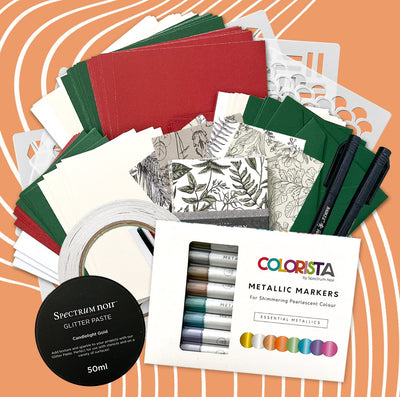Happy New Year, Muse Kit pals!
We hope some of you made getting creative a New Year’s resolution because we are back with another wonderful medium for you to play with: polymer clay.
Polymer clay is a sculpting medium that has become increasingly popular since its invention in the 1930s. In our opinion, the thing that sets this medium apart is that it makes creating sculptures, jewelry, and decorations accessible to just about anybody without needing extra expensive equipment.
In this blog, we are going to discover what polymer clay is made of, how it hardens without firing, and give you some ideas about how to use it yourself. So grab your clay, and let’s get into the wonderful world of polymer clay.
What is Polymer Clay?
To get to know polymer clay, we need to learn a bit more about what it’s made up of.
As the name suggests, polymer clay is a plastic-based modeling clay without any natural clay material. To get technical, it is created by combining polymer polyvinyl chloride resin with a plasticizer to create malleable plastisol. The resulting polymer clay will remain soft and workable until it is cured.
In this month’s box, we have supplied you with white clay that you can color using pastels, but polymer clay is actually available in every shade you could possibly think of. If your local craft store doesn’t have the shade you want, I recommend checking online for a more extensive selection of colors.
This clay doesn’t require any prep work, so all you need to do is remove it from the packaging and get sculpting! We recommend using a clean glass cutting board or ceramic tile to work on to prevent sticking.
While sculpting with your hands is great, if you really want to get into it, we like to have some additional sculpting tools and a rolling pin. If you are having trouble rolling your polymer clay out thinly and evenly, then why not try a pasta machine? As you can see, you really don’t need anything other than items you probably already have at home.
It's also incredibly easy to use additives with polymer clay to create a varied surface texture or a bit of shine. Glitter, gold foil, and even glow-in-the-dark powder can be worked into the clay using various techniques to change your clay up and make it that little bit more special.
You can even chop up and blend a few shades of clay together and roll it out into a stunning marbled pattern in whatever shades tickle your fancy.
Polymer clay can be painted, glazed, or colored using pastels like in this month’s box. This gives you a lot of freedom and flexibility to create whatever your imagination can come up with.
So now that you know how to get going with polymer clay, the next question is, how do you cure it? Let’s find out.

How Does Polymer Clay Harden?
One of the main selling points of polymer clay is the fact that it doesn’t require firing in a kiln to cure. So if it doesn’t need a kiln, how does polymer clay harden?
The answer is already sitting in your kitchen! The only ‘kiln’ needed for polymer clay is a regular home oven; how convenient is that?
All you need to do is bake your polymer clay creations in a regular home oven to cure them. The best way to do this is to pop your pieces onto a piece of parchment paper on a baking tray. And don’t worry, it is entirely safe and non-toxic, so it won’t contaminate your oven.
Polymer clay is baked between 265 F to 275 F, but you should check the packaging of your particular brand of clay to get the temperature perfect. The general rule of thumb that we use is to bake it for fifteen minutes per ¼ inch of clay used.
Be very careful removing the tray from the oven and leave them to completely cool before touching them.
This curing process makes polymer a more durable and versatile alternative to air-dry clay, which tends to be brittle and inappropriate to use for smaller creations.

What Can You Make Out of Polymer Clay?
Or rather, what can’t you make out of polymer clay?
This easy-to-use medium really allows you to create whatever your imagination can come up with. This aspect also transcends all age ranges, so you, as an adult, can use polymer clay, but your young children can also participate just as easily. If you have kids, why not make polymer clay a fun weekend activity that you can bond over while you nurture their budding creativity?
From jewelry and sculptures to ornaments and home decor, the polymer clay world is your oyster! There are even polymer clay artworks being exhibited in major art museums as e speak! If you are looking for a bit of guidance, there are many tutorials online for step-by-step projects to get you started before you dive into coming up with your own creations.
One area that polymer clay is not suitable for is food items. Although it may seem tempting to try to craft a mug or bowl from polymer clay, we don’t recommend it as the material is not food safe and may lead to adverse effects on your health as well as deterioration of the items.
Here are a few uses for the wondrous polymer clay:
Jewelry
If you open up Etsy, the likelihood that you will encounter a polymer clay jewelry store after just one scroll is very high!
This is likely because polymer clay is so easy to work with, which makes it ideal for small-scale pieces like jewelry. It is also effortless to poke the necessary holes needed to add the hardware that just isn't available when working with metal and other jewelry-making mediums.
Using this wonderful medium, you can make the jewelry you’ve always wanted in the comfort of your home! From simple earrings and pendants to full-on novelty sets, polymer clay lets you express yourself however you please.
For a while, we were under the impression that polymer clay jewelry tends to be a novelty, brightly colored, and more on the quirky side. While this is true, it can also be used to create really elegant chic pieces if you use the proper additives and choose suitable shapes.

Sculptures and Ornaments
Just like regular clay, polymer clay is a great medium for making figurines and other sculptures.
What you make really depends on your artistic style or the aesthetic of the person that you are making the item for. The colors available and the ease of using additives mean that you can create your ideal palette and surface texture to sculpt something genuinely unique.

Add Some Extras
Home decor is really where polymer clay shines!
Polymer clay is there for you, from planters to ashtrays, desk buddies, and trinket dishes. We don’t know about you, but when we decorate, we have a strong idea of what we want our space to look like, but it can be hard to find the perfect pieces to fit it. Using polymer clay, you can make home decor pieces that fit perfectly into your design down to shape, color, and overall aesthetic.
One of our favorite polymer clay projects that we’ve found online is someone making kitchen cupboard handles in the shapes of different fruits and vegetables; it was a fun project to do, and the look was incredible and totally unique.
So, as you can see, polymer clay is a wonderful sculpting medium that lets you sculpt and bake in the comfort of your own home. We hope this has got you excited to try polymer clay for yourself; we can’t wait to see what you come up with.

a




